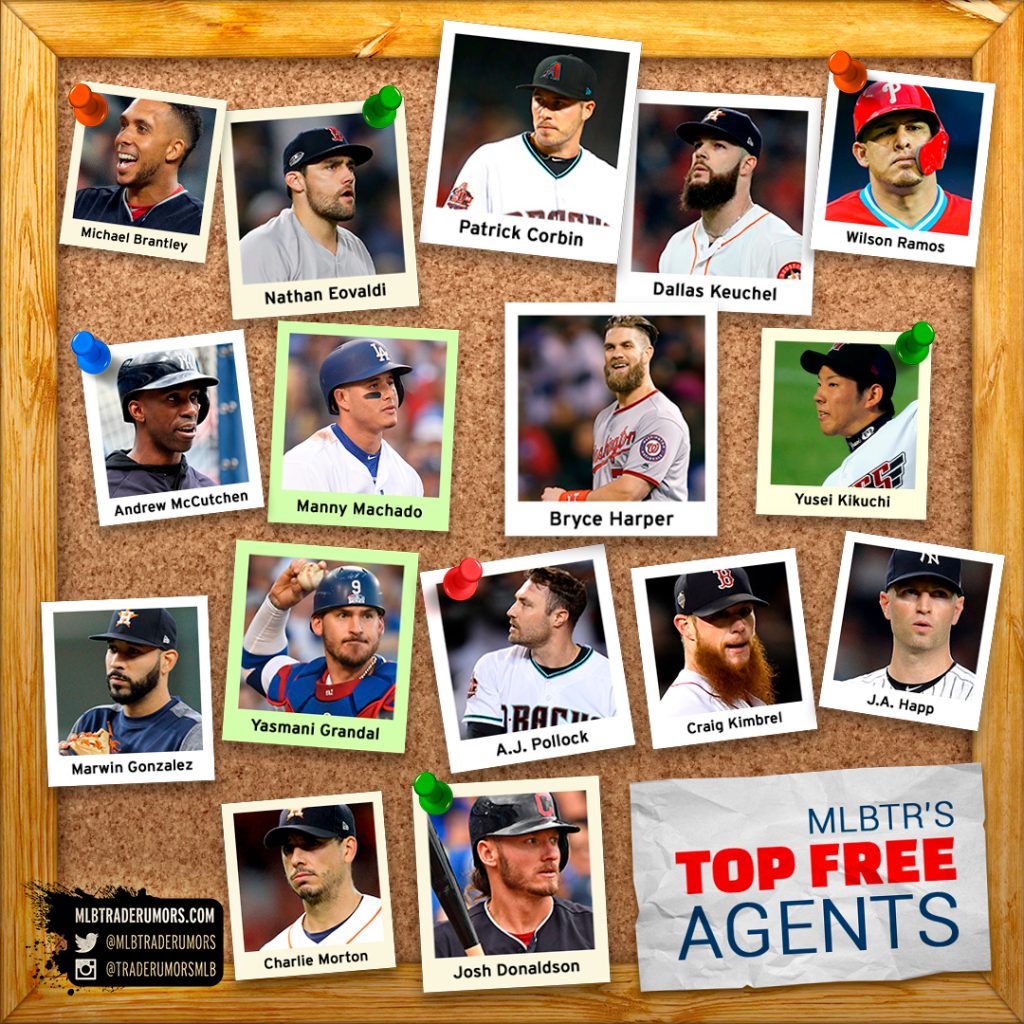Were you one of the 6,845 people who entered in MLBTR’s Free Agent Prediction Contest back in November? If so, you’ll want to check out our new contest leaderboard. With 21 of the top 50 free agents signed, 11 people are tied with a .286 batting average (six correct predictions). Of those, Kris Freel currently wears the crown with correct picks on Nathan Eovaldi, J.A. Happ, Josh Donaldson, Jeurys Familia, Andrew Miller, and Joe Kelly. MLBTR writer Ty Bradley is one of about 100 people with five correct, leading our website staff.
To find out how you’re doing, simply type your name into the search box. You can also click anyone’s name to see the picks they made, and try the “Staff Only” button to see how the seven participating MLBTR writers are doing.

